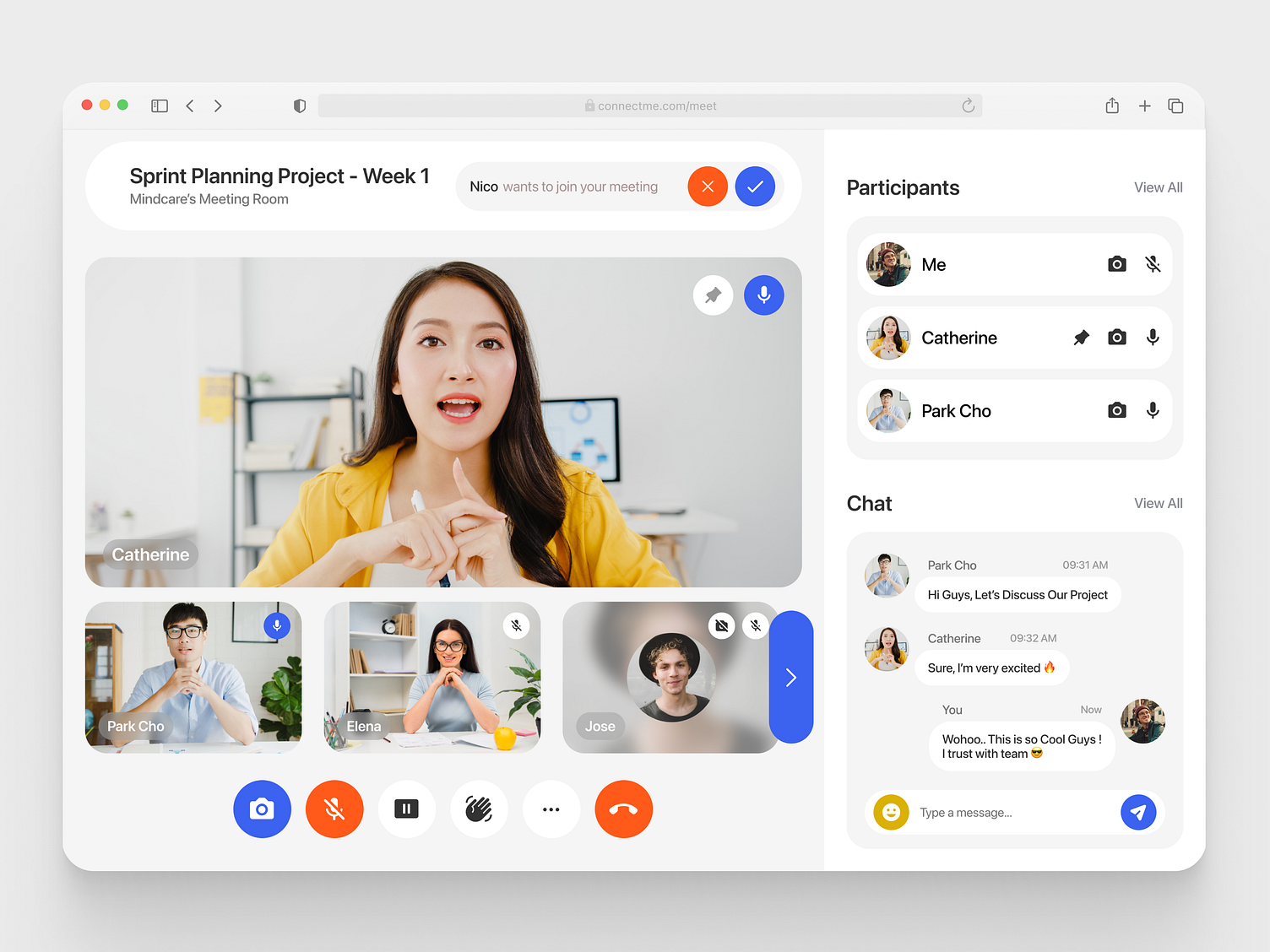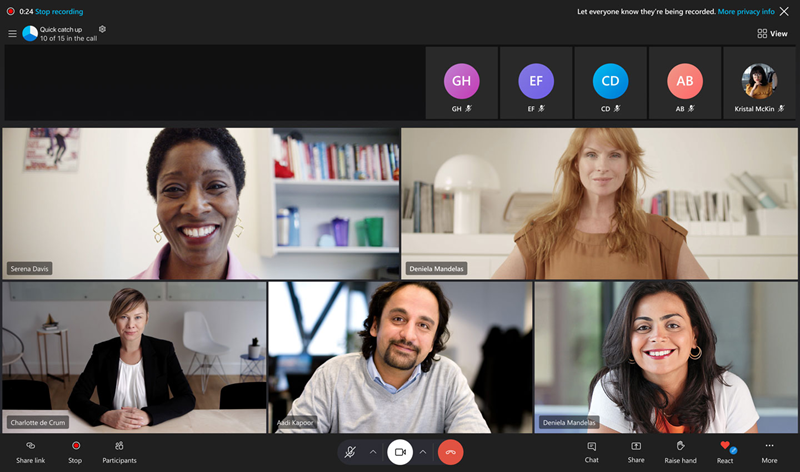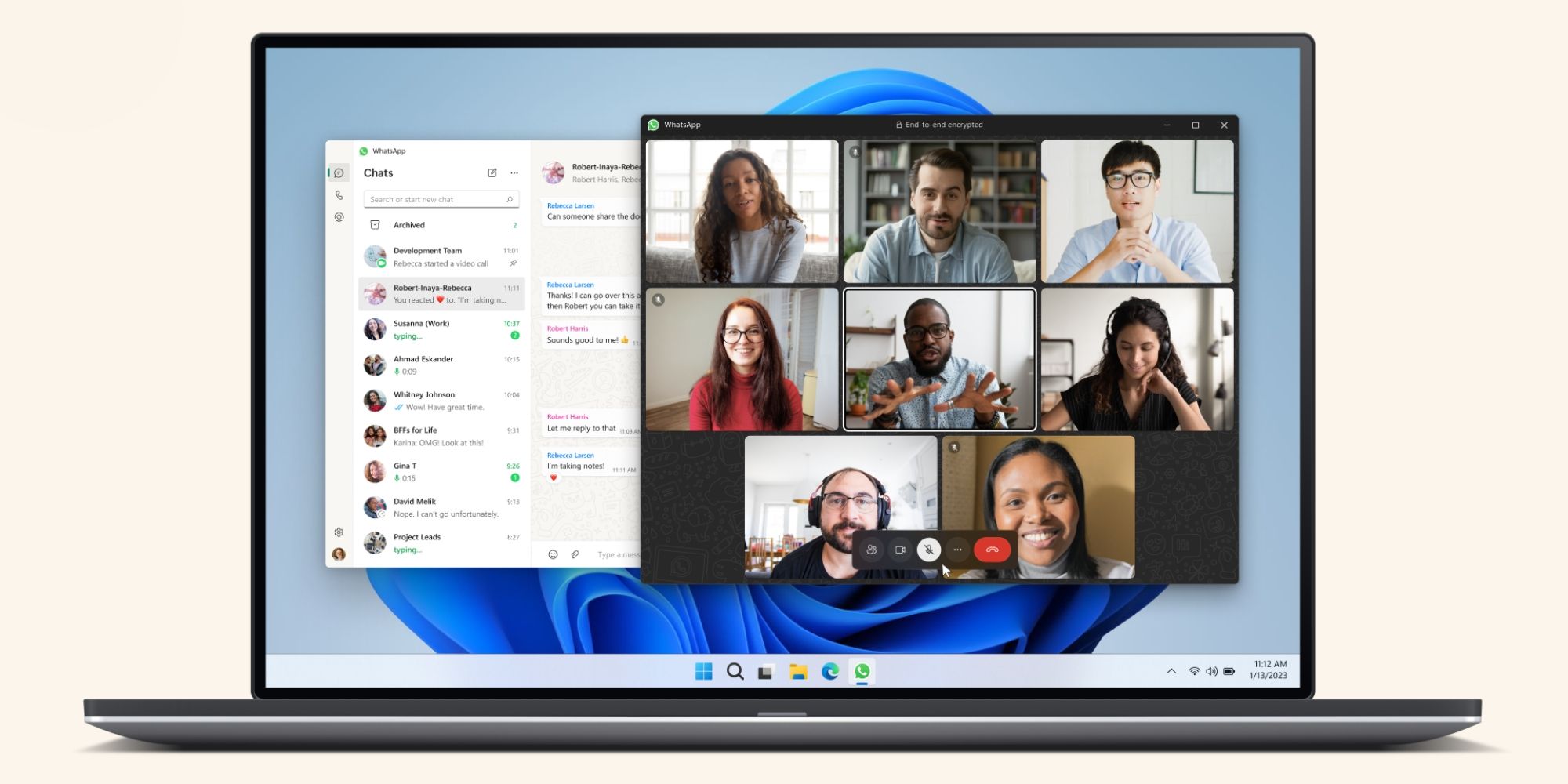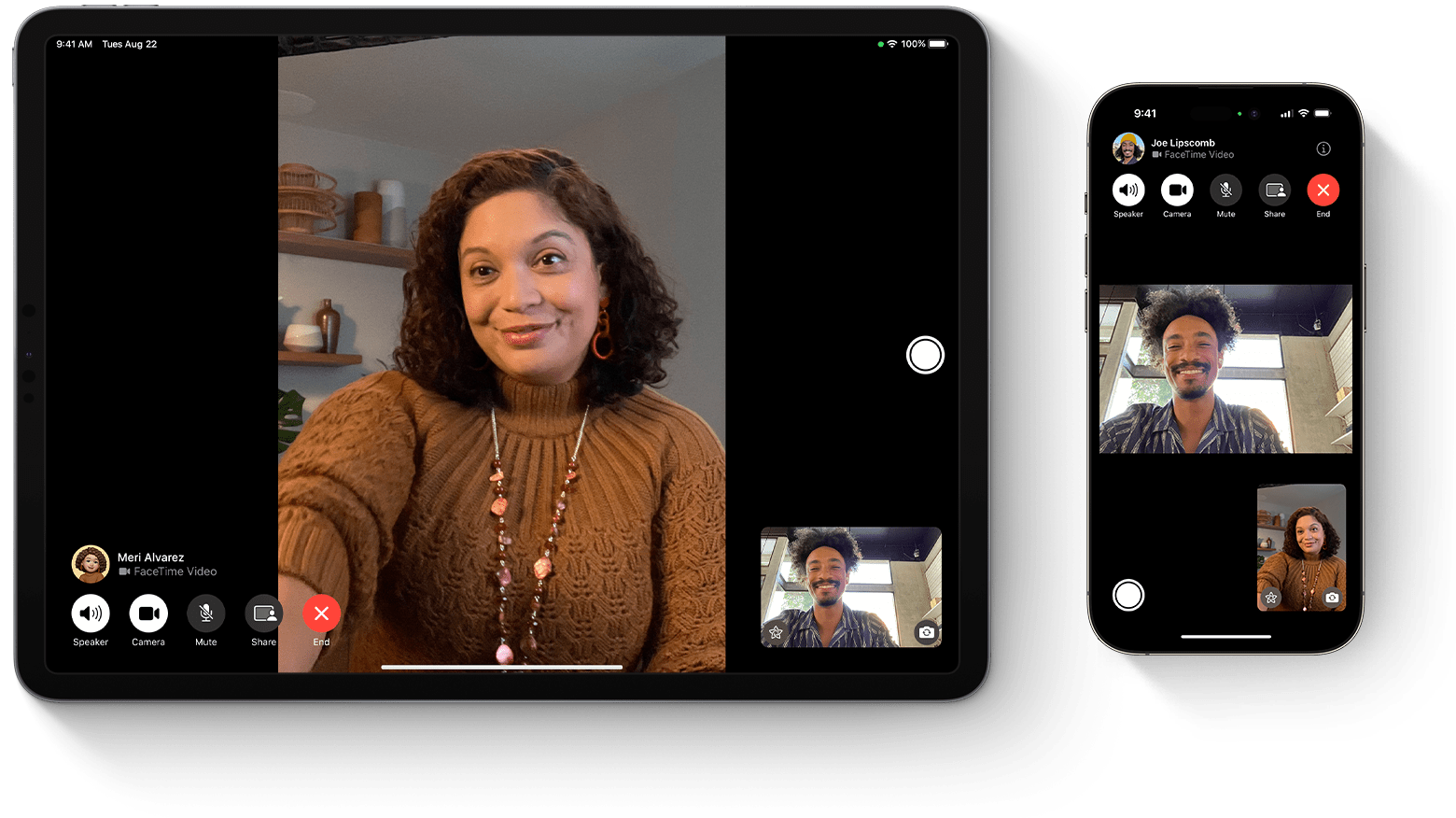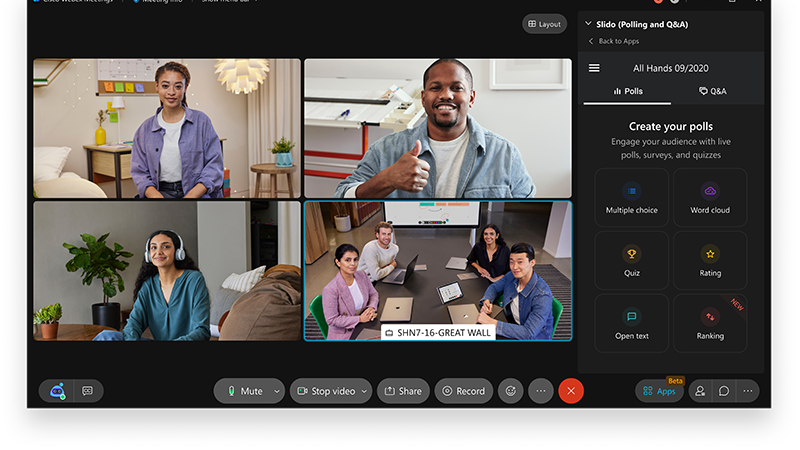1. Zoom
Zoom is a widely-used video conferencing app known for its reliability and versatility, catering to both professional and personal use. It supports high-definition video and audio quality, making it a popular choice for business meetings, webinars, online classes, and social gatherings.
Key Features:
- High-definition video and audio quality
- Large participant capacity (up to 1,000 with webinars)
- Breakout rooms for smaller group discussions
- Screen sharing and recording capabilities
- Virtual backgrounds and filters
Pros:
- User-friendly interface
- Extensive features for businesses and educators
- Strong performance and reliability
- Frequent updates and new features
Cons:
- Free plan has a 40-minute limit on group meetings
- Security issues in the past (though largely addressed)
- Higher cost for advanced features
2. Microsoft Teams
Microsoft Teams is an integrated communication and collaboration platform ideal for professional environments. It offers seamless integration with Office 365, making it a central hub for team collaboration, project management, and virtual meetings.
Key Features:
- Integration with Office 365
- Large meeting capacity (up to 10,000 participants for live events)
- Collaboration tools like chat, file sharing, and project management
- Enterprise-level security and compliance
- Customizable backgrounds
Pros:
- Seamless integration with Microsoft Office apps
- Robust collaboration features
- High-security standards
- Suitable for large organizations
Cons:
- Steeper learning curve for new users
- Can be resource-intensive
- Free version has limited features
3. Google Meet
Google Meet is a simple, reliable video conferencing tool that integrates seamlessly with Google Workspace. It is designed for ease of use, allowing users to join meetings directly from their web browser without the need for downloads.
Key Features:
- Easy access via web browser
- Integration with Google Calendar and other Google apps
- Real-time captioning
- No time limits for meetings (up to 60 minutes for free users)
- Screen sharing and recording
Pros:
- User-friendly and easy to join meetings
- Excellent integration with Google services
- High-quality video and audio
- Good security features
Cons:
- Limited features in the free version
- Participant limit of 100 for free users
- Less customizable than some competitors
4. Skype
Skype is a long-standing video calling app known for its cross-platform availability and user-friendly interface. It supports a range of features including international calling, making it a versatile tool for both personal and professional communication.
Key Features:
- Cross-platform support
- Call recording and live subtitles
- Low-cost international calling
- Screen sharing and file transfer
- Group video calls with up to 50 participants
Pros:
- Wide availability on various devices
- Reliable and easy to use
- Good for international calls
- Free to use for most features
Cons:
- Video quality can be inconsistent
- Less feature-rich than some newer apps
- Occasional connectivity issues
5. WhatsApp
WhatsApp is a popular messaging app that also supports secure video calls, widely used for personal communication. With its simple interface and large user base, it’s a go-to app for staying connected with friends and family.
Key Features:
- End-to-end encryption for all communications
- Group video calls with up to 8 participants
- Cross-platform availability
- Easy-to-use interface
- Free international calls
Pros:
- High security and privacy
- Simple and intuitive to use
- Large user base
- Free to use
Cons:
- Limited to smaller group calls
- Requires a phone number for registration
- Basic video calling features
6. FaceTime
FaceTime is Apple's video calling app, known for its high-quality video and seamless integration with Apple devices. It’s designed for personal use, offering a range of fun features like Animoji and Memoji.
Key Features:
- High-definition video and audio
- Group calls with up to 32 participants
- Animoji and Memoji for fun interactions
- Integration with the Apple ecosystem
- End-to-end encryption
Pros:
- Excellent video and audio quality
- Easy to use for Apple device users
- Fun and engaging features
- Secure and private
Cons:
- Limited to Apple devices
- No support for Android or Windows
- Fewer business-oriented features
7. Cisco Webex
Cisco Webex is a professional video conferencing tool known for its robust security and scalability, ideal for businesses. It provides a comprehensive suite of collaboration tools, making it suitable for various business needs.
Key Features:
- Enterprise-grade security
- Scalable for small meetings to large webinars
- Advanced collaboration tools (whiteboarding, file sharing)
- Customizable plans and features
- High-definition video and audio
Pros:
- Strong security and compliance
- Flexible and scalable
- Rich collaboration features
- Reliable performance
Cons:
- Higher cost for advanced features
- Can be complex to set up and use
- Resource-intensive
8. Viber
Viber is a secure messaging and calling app with a focus on privacy, offering free video calls and a variety of fun features. It’s popular for personal use and small group communication.
Key Features:
- End-to-end encryption
- Free international Viber-to-Viber calls
- Group calls with up to 20 participants
- Stickers and GIFs for fun interactions
- Cross-platform availability
Pros:
- High security and privacy
- Free to use for Viber-to-Viber calls
- Fun and engaging features
- Easy to use
Cons:
- Limited to smaller group calls
- Requires internet connection for all calls
- Less professional features
9. Discord
Discord is a community-building platform originally designed for gamers, now used by various groups for communication and collaboration. It offers customizable servers and a range of communication tools.
Key Features:
- Continuous, always-on voice channels
- Screen sharing and video calls
- Customizable servers with roles and permissions
- Integration with various apps and bots
- Community management tools
Pros:
- Highly customizable
- Suitable for both casual and professional use
- Robust community features
- Free to use
Cons:
- Can be overwhelming for new users
- Video quality can vary
- Requires moderation for large communities
10. Jitsi Meet
Jitsi Meet is a free, open-source video conferencing app known for its security and ease of use without the need for an account. It’s a highly customizable platform suitable for privacy-conscious users.
Key Features:
- No account needed to join meetings
- Open-source and free to use
- High security with password protection and encryption
- Screen sharing and recording
- Customizable and can be self-hosted
Pros:
- Free and open-source
- High security and privacy
- Easy to use
- Customizable
Cons:
- Fewer features than some competitors
- Requires technical knowledge for self-hosting
- Video quality can vary
Conclusion
Whether for professional meetings, personal connections, or community building, these top 10 video calling apps offer a variety of features to meet different needs. From the robust capabilities of Zoom and Microsoft Teams to the simplicity of WhatsApp and FaceTime, there's a suitable app for everyone in 2024.

